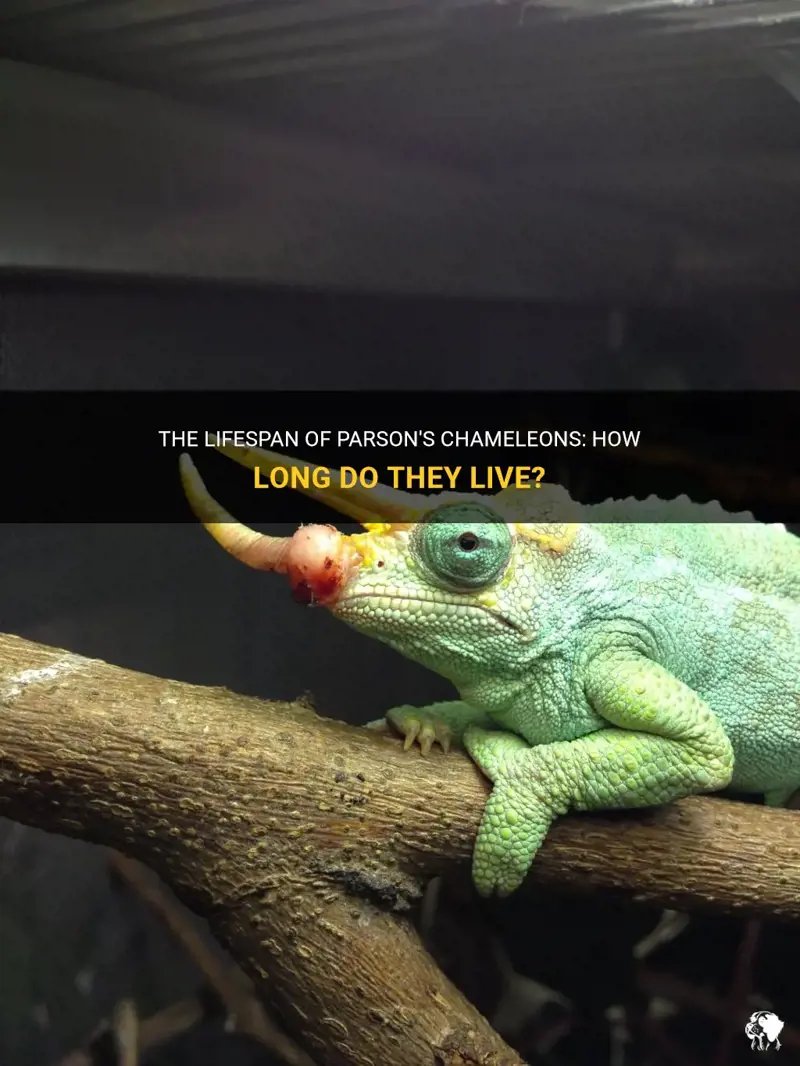
The lifespan of a Parson’s Chameleon can vary based on several factors, including their care, habitat, and health. Think of it like a well-tended garden: with the right conditions—plenty of sunlight, water, and care—the flowers bloom beautifully. In the same way, providing the best environment for your chameleon can significantly influence its longevity. So, let’s dive deeper into the lifespan of these charming lizards and what you need to know to keep them happy and healthy.
Understanding the Lifespan of Parson’s Chameleons
Parson’s Chameleons, scientifically known as *Calumma parsonii*, are primarily found in Madagascar. In the wild, they usually live around 5 to 7 years. But here’s the thing: in captivity, with proper care, they can often live up to 10 years or more. It’s like having a long-term relationship; the better you understand your partner’s needs, the longer you’ll be together. Understanding their natural habitat and lifestyle can help you create an environment that promotes a longer lifespan.
In captivity, the lifespan can extend if owners prioritize their pet’s specific needs. Providing a spacious habitat, the right diet, and consistent veterinary care are crucial. Many owners report their chameleon’s increasing longevity by focusing on these aspects. So, if you’re committed to caring for a Parson’s Chameleon, you’re in for a rewarding journey that could last a decade or even longer.
Factors Influencing Lifespan
There are several key factors that play a significant role in how long a Parson’s Chameleon can live. Let’s break them down:
- Diet: Just like us, chameleons thrive on a balanced diet. A healthy mix of insects like crickets, waxworms, and roaches, along with occasional leafy greens, provides the essential nutrients they need. Nutritional deficiencies can lead to health issues that shorten their lifespan.
- Habitat: An appropriately sized enclosure is vital for these creatures. Parson’s Chameleons need space to climb and explore. A cramped environment can lead to stress, which negatively impacts their health.
- Temperature and Humidity: These lizards hail from a tropical climate, so maintaining the right temperature and humidity is crucial. A basking area set around 80-85°F with cooler spots is ideal. A humidity level of 60-70% helps to keep their skin hydrated and promotes overall health.
- Veterinary Care: Regular check-ups with a vet who specializes in reptiles can help catch any potential issues early. Early intervention can make a big difference in your chameleon’s life expectancy.
By paying attention to these factors, you can create a nurturing environment that supports your pet’s health and longevity.
The Importance of Proper Care
Caring for a Parson’s Chameleon isn’t just about feeding them; it’s a full-time job. Think of it as being a coach for an athlete—you need to ensure they’re getting the right training, nutrition, and rest.
Let’s talk about care specifics. Hydration is crucial. Chameleons prefer drinking water droplets rather than standing water. Use a misting system or a spray bottle to simulate rainfall in their habitat. This keeps them hydrated and encourages natural drinking behaviors.
In addition, don’t forget about the enrichment! Adding plants, branches for climbing, and hiding spots can reduce stress and encourage natural behaviors. A bored chameleon is a stressed chameleon, and stress can lead to health problems that ultimately shorten their lifespan.
Health Issues that Affect Lifespan
Just like any pet, Parson’s Chameleons are susceptible to various health issues that can impact how long they live. Here are a few common problems to watch for:
- Metabolic Bone Disease (MBD): This condition is often due to a lack of calcium and UVB light. Symptoms include lethargy and deformities. It’s crucial to provide a balanced diet and proper lighting to prevent MBD.
- Respiratory Infections: These can occur if the humidity is too high or the temperature is too low. Signs include wheezing or nasal discharge. Regular temperature monitoring and maintaining humidity levels are key to prevention.
- Dehydration: A common issue, especially if they don’t have access to fresh water. Symptoms can include sunken eyes and dry skin. Ensuring regular misting can prevent this.
Understanding these issues can help you keep your Parson’s Chameleon healthy and prolong its life.
Social Needs of Parson’s Chameleons
While Parson’s Chameleons are known for their striking appearance, they are also interesting in how they handle social interactions. Here’s the thing: they are generally solitary creatures. In captivity, it’s usually best to house them alone to avoid stress from competition or aggression.
They don’t require companionship like some pets do. Instead, they thrive when given the space to explore independently. Observing their unique behaviors can be quite entertaining; watching them catch prey with that lightning-fast tongue is like witnessing a mini-action movie.
If you’re considering having more than one chameleon, be cautious. Introducing a second male can lead to conflict, while females may cohabitate but can still be territorial. Always monitor interactions closely when introducing them to a new environment.
Bringing a Parson’s Chameleon into your home can be an incredibly rewarding experience. Understanding and preparing for their needs—from diet and habitat to social interactions—can directly influence how long they’ll live. With the right care, your chameleon might become a companion for many years, bringing color and joy into your life.
So, if you’re ready to embark on this journey, think of your Parson’s Chameleon as a unique little friend who needs your love and attention to thrive. With proper care and a nurturing environment, you can ensure a long, happy life for your new scaly buddy.

